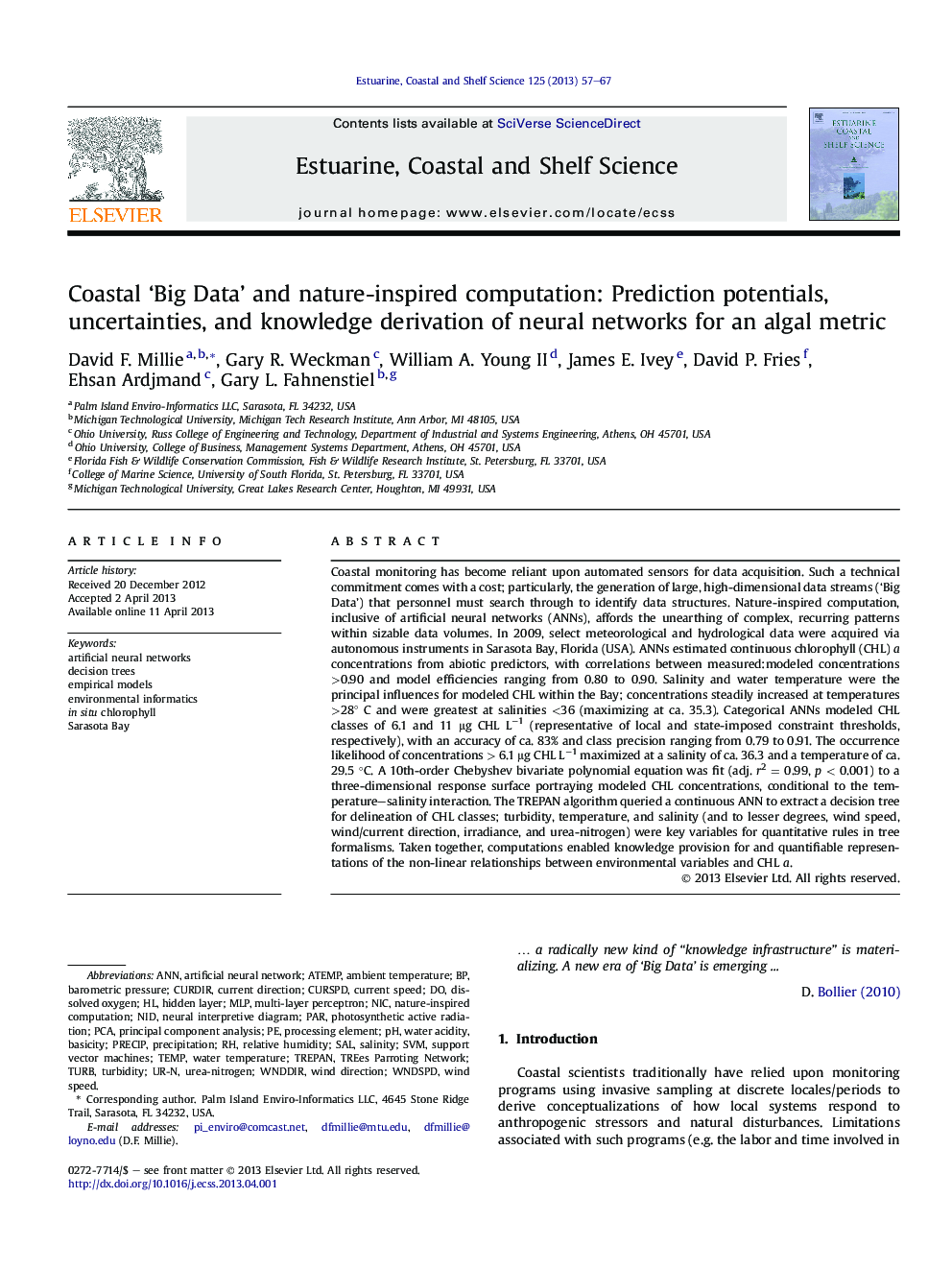| کد مقاله | کد نشریه | سال انتشار | مقاله انگلیسی | نسخه تمام متن |
|---|---|---|---|---|
| 4539906 | 1626671 | 2013 | 11 صفحه PDF | دانلود رایگان |

• Neural networks modeled chlorophyll a in a high-dimensional estuarine database.
• Pedagogical knowledge extraction defined environmental influences upon chlorophyll.
• Salinity and temperature were the principal influences for modeled concentrations.
• Decision trees delineated chlorophyll concentrations relevant to management use.
• Application of nature-inspired computation for coastal data synthesis was discussed.
Coastal monitoring has become reliant upon automated sensors for data acquisition. Such a technical commitment comes with a cost; particularly, the generation of large, high-dimensional data streams (‘Big Data’) that personnel must search through to identify data structures. Nature-inspired computation, inclusive of artificial neural networks (ANNs), affords the unearthing of complex, recurring patterns within sizable data volumes. In 2009, select meteorological and hydrological data were acquired via autonomous instruments in Sarasota Bay, Florida (USA). ANNs estimated continuous chlorophyll (CHL) a concentrations from abiotic predictors, with correlations between measured:modeled concentrations >0.90 and model efficiencies ranging from 0.80 to 0.90. Salinity and water temperature were the principal influences for modeled CHL within the Bay; concentrations steadily increased at temperatures >28° C and were greatest at salinities <36 (maximizing at ca. 35.3). Categorical ANNs modeled CHL classes of 6.1 and 11 μg CHL L−1 (representative of local and state-imposed constraint thresholds, respectively), with an accuracy of ca. 83% and class precision ranging from 0.79 to 0.91. The occurrence likelihood of concentrations > 6.1 μg CHL L−1 maximized at a salinity of ca. 36.3 and a temperature of ca. 29.5 °C. A 10th-order Chebyshev bivariate polynomial equation was fit (adj. r2 = 0.99, p < 0.001) to a three-dimensional response surface portraying modeled CHL concentrations, conditional to the temperature–salinity interaction. The TREPAN algorithm queried a continuous ANN to extract a decision tree for delineation of CHL classes; turbidity, temperature, and salinity (and to lesser degrees, wind speed, wind/current direction, irradiance, and urea-nitrogen) were key variables for quantitative rules in tree formalisms. Taken together, computations enabled knowledge provision for and quantifiable representations of the non-linear relationships between environmental variables and CHL a.
Journal: Estuarine, Coastal and Shelf Science - Volume 125, 1 July 2013, Pages 57–67